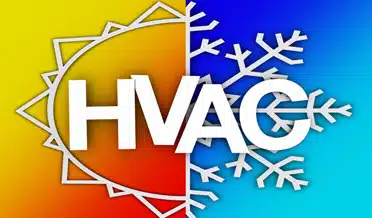HVAC Repair: Avoiding Hot and Cold Spots in Your Home
HVAC Repair: Avoiding Hot and Cold Spots in Your Home
If your home has a room or space that is abnormally cold in the winter, it is becoming very evident at this time of the year. Since you are a responsible homeowner, you have probably checked all the obvious issues that can be fixed with a do-it-yourself project, such as changing air filters and uncovering supply vents. However, if the problem persists, consider having an HVAC technician check the air balance in your home.
Heating, cooling, and ventilation all require adequate and equal airflow to reach every space. The system as designed and installed should provide “enough” air, but problems can develop that disrupt the proper movement of air. Air balancing measures the equilibrium and finds solutions should a pressure deficit be detected. A technician will bring the proper tools, training, and expertise to evaluate the airflow and recommend viable solutions. Here are the highlights of the air balancing process.
Reverse Engineering HVAC Repair
The technician will use the model and serial numbers to gather the specifications for your current HVAC system. Both heating and cooling capacities can be determined. Some blower motors have variable speeds and the rating for each blower setting will become useful information. The design capacities can be compared to the measured results to ensure your HVAC system is functioning efficiently.
When your system was designed and installed, a technician ran a load calculation to determine the proper size of your system. Recalculating your home’s heating and cooling need is also useful information. If you have made changes, remodeled, or enlarged your living space, even slight space modifications can change the load requirements. Rechecking the load calculation will uncover such problems and make recommendations to compensate.
HVAC Repair: Performance Evaluations
The second stage of the air-balancing task includes measuring airflow from each supply register and cold air return. Access is required to all your home’s spaces. The technician will bring equipment that will measure:
- The air volume as it moves through the vent
- Both the airspeed and temperature at the register
- The air humidity from the supply air
The desired result is an equal measurement of these air qualities in each room. If you are experiencing comfort problems, the location of the problem vent(s) can be determined by these measurements. The measurements will also give clues to the technician to pinpoint the issue or further the investigation.
HVAC Repair Frequent Findings
The goal of the air balance study is to find problem supply registers that create an airflow imbalance.
- If they exist, air balancing will uncover design flaws in your ductwork. Ducts might have been sized too small, have runs that are too long, or have unusually sharp turns. While completely redesigning your HVAC ductwork might not be possible, correcting the most pressing problems might be a possible solution.
- Frequently, ductwork along the way has been damaged. Slight vibrations can create gaps or loosen sheet metal joints. The blower motor puts the duct under pressure; like water in a leaky pipe, air will find a way to escape. Finding and repairing even a small leak can significantly impact the airflow in your problem area.
- When the blower motor has cycled off, the gap(s) allow air and pests to infiltrate the ductwork and enter your home. Finding these gaps have several benefits.
- While not a frequent issue, on occasion a duct blockage will found.
The desired result of an air balance investigation is to discover problems with airflow that creates hot or cold spots. An equal amount of conditioned air is necessary for each room to maintain comfort. Discovering problems and designing solutions will reduce or remove the imbalance creating the hot and cold spots.
Let us help with your HVAC Repair questions!
Schedule your free HVAC Repair consultation by calling AllCool AC & Heating at 281-238-9292 or contact us via email.
